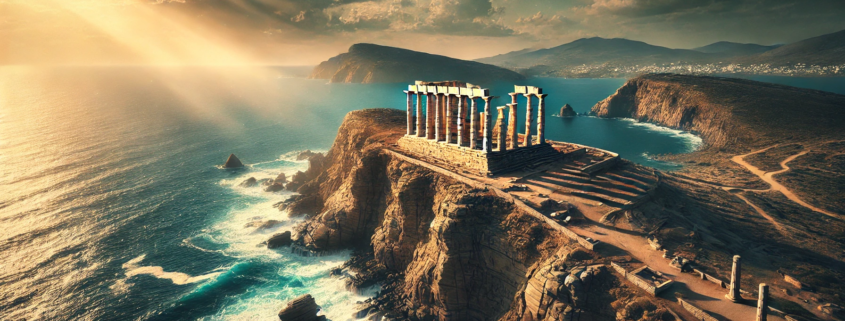Top 10 National Parks in Greece: Ultimate Guide to Greece’s Natural Wonders
1. Mount Olympus National Park
- Location: Thessaly and Central Macedonia
- Highlights: Mount Olympus (the highest peak in Greece), deep gorges, waterfalls, and alpine meadows.
- Best Time to Visit: June to September for hiking; winter months for snow sports at lower elevations.
- Activities: Hiking, mountaineering, birdwatching, and photography.
- Overview: As the mythical home of the Greek gods, Mount Olympus is Greece’s most famous mountain. The park features rich biodiversity, scenic trails, and challenging climbs for experienced hikers looking to reach its highest peak, Mytikas.
2. Vikos–Aoös National Park
- Location: Epirus, northwestern Greece
- Highlights: Vikos Gorge (one of the world’s deepest gorges), Aoös River, and traditional stone villages.
- Best Time to Visit: Spring and autumn for hiking and mild weather.
- Activities: Hiking, rafting, birdwatching, and exploring local villages.
- Overview: Known for the dramatic Vikos Gorge and beautiful Zagori villages, this park offers stunning scenery and a mix of river valleys, gorges, and forested areas. The park is ideal for adventurers and nature lovers alike.
3. Parnassos National Park
- Location: Central Greece, near Delphi
- Highlights: Mount Parnassus, forests, and the historic site of Delphi.
- Best Time to Visit: Winter for skiing; spring and summer for hiking.
- Activities: Skiing, hiking, and visiting ancient ruins.
- Overview: Named after the famous Mount Parnassus, this park is close to the archaeological site of Delphi. It offers beautiful trails and a popular ski resort, making it a year-round destination for nature and history enthusiasts.
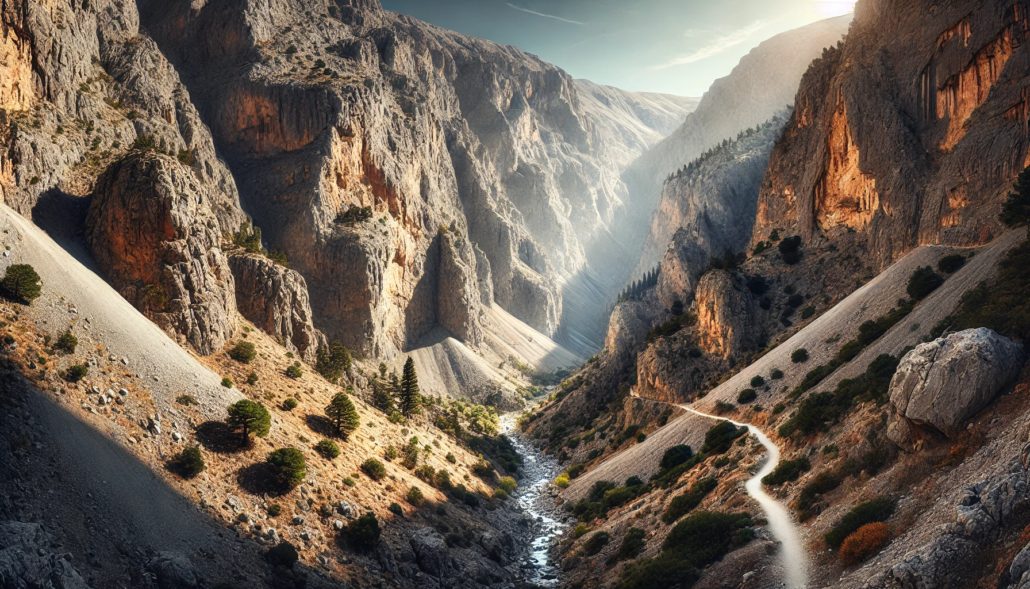
4. Samaria Gorge National Park
- Location: Crete
- Highlights: Samaria Gorge (Europe’s longest gorge), steep cliffs, and diverse flora and fauna.
- Best Time to Visit: May to October; the gorge is typically closed in winter due to weather.
- Activities: Hiking and wildlife watching.
- Overview: Located in the White Mountains of Crete, Samaria Gorge is one of Greece’s most famous hikes. The 16-km trek takes you through a stunning gorge with breathtaking cliff walls and the chance to spot endangered species like the Cretan wild goat.
5. Prespa National Park
- Location: Northern Greece, near the borders with Albania and North Macedonia
- Highlights: Great and Small Prespa Lakes, diverse birdlife, and island monasteries.
- Best Time to Visit: Spring and autumn for birdwatching; summer for boating.
- Activities: Birdwatching, kayaking, and nature photography.
- Overview: Prespa National Park is a serene wetland area known for its twin lakes and exceptional biodiversity. It’s a birdwatcher’s paradise, with species like pelicans and herons frequently seen in the area.
6. Sounion National Park
- Location: Near Athens, Attica Peninsula
- Highlights: Temple of Poseidon, coastal cliffs, and forested trails.
- Best Time to Visit: Spring and autumn for hiking and sightseeing.
- Activities: Hiking, coastal walks, and visiting ancient ruins.
- Overview: Sounion combines stunning coastal scenery with ancient history. Known for the Temple of Poseidon overlooking the Aegean Sea, the park offers both cultural and natural attractions, perfect for a day trip from Athens.
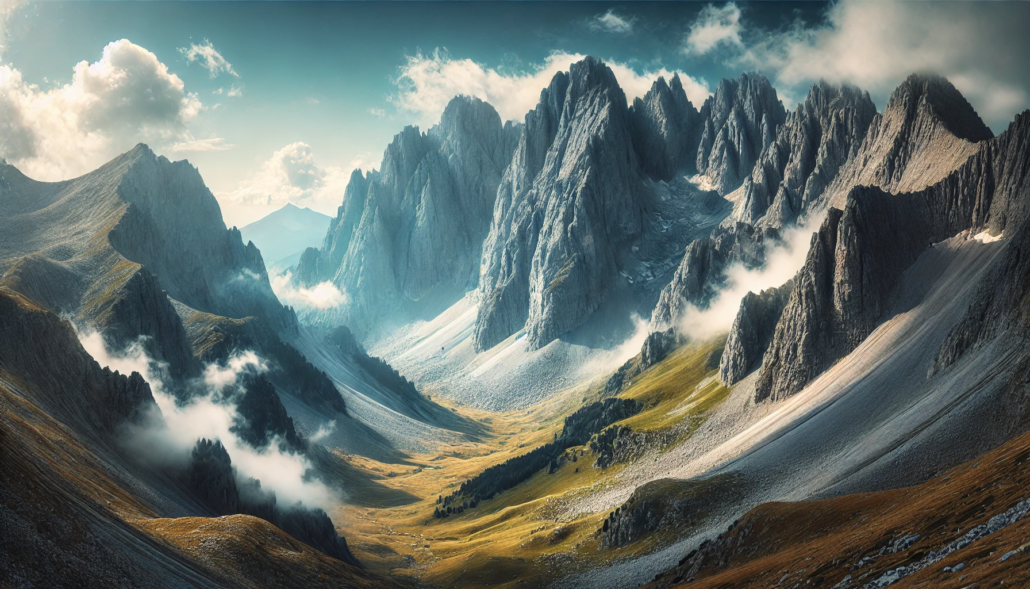
7. Zakynthos National Marine Park
- Location: Zakynthos Island, Ionian Sea
- Highlights: Nesting sites for loggerhead sea turtles, sandy beaches, and clear waters.
- Best Time to Visit: June to August for marine activities; late spring and early summer for quieter visits.
- Activities: Snorkeling, scuba diving, and wildlife watching.
- Overview: Established to protect the endangered loggerhead sea turtle, Zakynthos National Marine Park is known for its sandy beaches and turquoise waters. Visitors can explore the coast and observe the protected turtle nesting areas.
8. Pindus National Park (Valia Kalda)
- Location: Northern Pindus Mountains, Epirus and Western Macedonia
- Highlights: Dense forests, mountain streams, and rare species such as the brown bear.
- Best Time to Visit: Late spring to early autumn for hiking; winter for snow-covered scenery.
- Activities: Hiking, wildlife watching, and camping.
- Overview: Known as Valia Kalda, this remote park is home to thick forests, mountain streams, and a variety of wildlife, including brown bears and wolves. Its untouched landscapes make it one of the wildest and least-visited parks in Greece.
9. Ainos National Park
- Location: Kefalonia Island, Ionian Sea
- Highlights: Mount Ainos (highest peak on the Ionian islands), Kefalonian fir forests, and panoramic sea views.
- Best Time to Visit: Spring to early autumn.
- Activities: Hiking, wildlife spotting, and scenic drives.
- Overview: Famous for its unique Kefalonian fir trees and wild horses, Ainos National Park offers spectacular views of the Ionian Sea and rugged forested slopes. It’s ideal for scenic hiking and nature photography.
10. Northern Pindos National Park
- Location: Epirus, northwestern Greece
- Highlights: Voidomatis River, Drakolimni (Dragon Lake), Zagori villages, and stone bridges.
- Best Time to Visit: Spring and autumn for hiking and milder temperatures.
- Activities: Hiking, rafting, exploring traditional villages.
- Overview: Northern Pindos National Park encompasses part of the Pindus mountain range, featuring historic stone bridges, alpine lakes, and traditional villages. It’s perfect for exploring scenic trails, crystal-clear rivers, and cultural heritage sites.
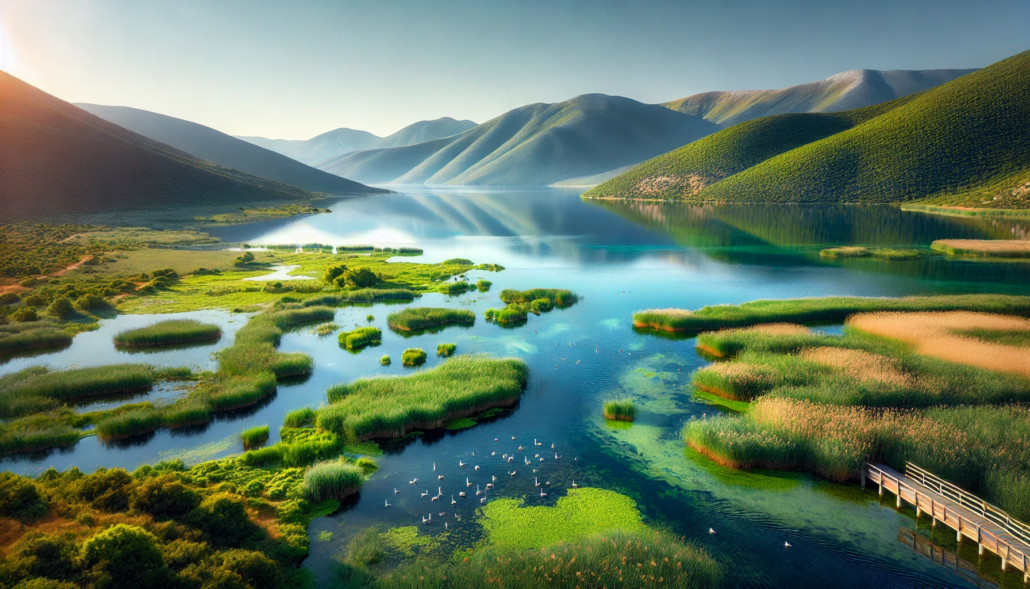
Summary Table: Greece’s National Parks
| National Park | Location | Highlights | Best Time to Visit | Activities |
|---|---|---|---|---|
| Mount Olympus | Thessaly & Central Macedonia | Greece’s highest peak, waterfalls | Summer for hiking, winter for snow sports | Hiking, mountaineering |
| Vikos–Aoös | Epirus, NW Greece | Vikos Gorge, Aoös River, stone villages | Spring and autumn | Hiking, rafting |
| Parnassos | Central Greece, near Delphi | Mount Parnassus, Delphi ruins | Winter for skiing, spring for hiking | Skiing, hiking, historical sites |
| Samaria Gorge | Crete | Europe’s longest gorge, cliff landscapes | May to October | Hiking, wildlife spotting |
| Prespa | Northern Greece | Great and Small Prespa Lakes, pelican habitat | Spring and autumn | Birdwatching, kayaking |
| Sounion | Attica Peninsula | Temple of Poseidon, coastal scenery | Spring and autumn | Hiking, sightseeing |
| Zakynthos Marine | Zakynthos Island, Ionian Sea | Loggerhead turtle nesting sites, beaches | Summer for marine activities | Snorkeling, wildlife watching |
| Pindus (Valia Kalda) | Northern Pindus Mountains | Dense forests, mountain streams | Late spring to autumn | Hiking, wildlife spotting |
| Ainos | Kefalonia Island, Ionian Sea | Kefalonian fir forests, panoramic views | Spring to early autumn | Hiking, scenic views |
| Northern Pindos | Epirus, NW Greece | Voidomatis River, alpine lakes, Zagori villages | Spring and autumn | Hiking, exploring villages |
Greece’s national parks offer breathtaking landscapes, from coastal cliffs and wetlands to mountain peaks and ancient forests. These parks are a haven for nature lovers, history enthusiasts, and adventure seekers alike, showcasing the rich natural and cultural heritage of Greece.
Top 10 Tips for Visiting Greece’s National Parks
Greece’s national parks feature a rich tapestry of landscapes, from the mythical Mount Olympus and deep gorges of Vikos to coastal sanctuaries and lush forests. Here’s a guide with essential tips, advice on what to pack, the best times to visit, and preparation for an unforgettable experience in Greece’s natural wonders.
1. How to Prepare for Your Visit
- Plan for Permit Requirements: Some parks, such as Mount Olympus, may require permits for certain trails or areas, especially for overnight stays. Check requirements in advance.
- Understand Local Regulations: Many Greek parks are protected due to delicate ecosystems, so it’s essential to follow guidelines, particularly around protected areas like Zakynthos’ turtle nesting sites.
- Consider Accommodation Options: Some parks, like those in Crete, are far from major cities. Book accommodations in advance, especially during peak summer months, as local hotels and guesthouses fill up quickly.
2. Best Ways to Travel to Greece’s National Parks
- Public Transport: Most popular parks, such as Parnassos and Mount Olympus, are accessible by bus from major cities. However, options may be limited in more remote areas, so check local schedules.
- Renting a Car: For parks like Vikos–Aoös and Pindus, renting a car is often the best way to access trails and villages, allowing for flexibility to explore the more remote trails.
- Ferries for Island Parks: Zakynthos Marine Park and Ainos National Park on Kefalonia are best accessed by ferry or domestic flights. Once on the islands, local buses or car rentals are ideal for getting around.
3. What to Wear
- Light, Breathable Clothing: Greece’s warm Mediterranean climate means summers can be hot, especially in coastal parks like Sounion and Zakynthos. Lightweight, breathable clothing will keep you cool.
- Layered Clothing: In mountainous parks like Olympus and Parnassos, temperatures drop at high elevations, even in summer. Wear layers for warmth, especially for early morning or evening hikes.
- Sturdy Hiking Boots: Trails in parks like Samaria Gorge and Vikos can be rocky and uneven. Waterproof hiking boots are recommended for comfort and support.
- Sun Protection: With Greece’s strong sun, a wide-brimmed hat, sunglasses, and high-SPF sunscreen are essential, particularly in exposed areas like Sounion and Zakynthos.
4. What to Bring
- Reusable Water Bottle: Many parks, especially in coastal and mountainous areas, lack drinking water along the trails. Bring enough water to stay hydrated, especially in summer.
- Snacks and Energy Bars: Food options may be limited within the parks, so carry high-energy snacks and packed lunches for long hikes, particularly in more remote parks like Pindus and Vikos.
- First Aid Kit: Include bandages, antiseptics, and any personal medications to handle minor injuries on rugged trails.
- Map or GPS: While trails are marked, remote areas like Valia Kalda in Pindus National Park can be challenging to navigate. An offline map or GPS is helpful.
5. What to Expect in Greece’s National Parks
- Varied Landscapes: From Mount Olympus’ alpine meadows to the wetlands of Prespa and coastal beaches in Zakynthos, Greece’s parks are incredibly diverse.
- Unique Wildlife: Many parks protect endangered species like the loggerhead turtle in Zakynthos and brown bears in Pindus. Observe wildlife respectfully and keep a safe distance.
- Mountain Huts (Refuges): Parks like Mount Olympus and Parnassos have mountain huts for hikers, but they require advance booking. These huts provide shelter and basic accommodations for multi-day treks.
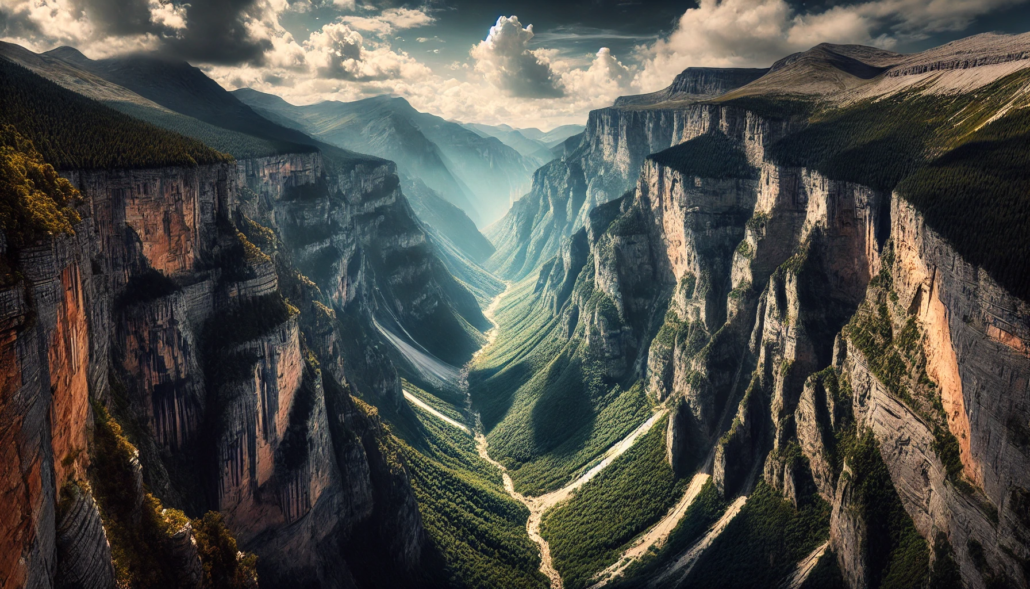
6. Seasonal Tips for Greece’s National Parks
- Spring (March – May): Ideal for most parks, with mild temperatures, wildflowers in bloom, and fewer crowds. Excellent for birdwatching in Prespa and Vikos.
- Summer (June – August): Best for coastal parks like Zakynthos and Sounion, though it can be hot. Visit mountain parks early or late in the day to avoid peak heat. Expect crowds in popular areas.
- Autumn (September – November): Mild temperatures and vibrant autumn colors make this season ideal for hiking in Olympus, Pindus, and Vikos.
- Winter (December – February): Higher elevations in parks like Mount Olympus and Parnassos see snow, making them suitable for winter sports. Coastal and island parks are quieter, though some trails may be muddy or closed.
7. Additional Tips for a Memorable Experience
- Start Early: Many parks, especially Samaria Gorge and Mount Olympus, are popular and get crowded. Early morning starts give you quieter trails and cooler temperatures.
- Respect Local Culture and Wildlife: Greece’s national parks are home to ancient ruins, historic sites, and protected wildlife. Be mindful of heritage sites and keep a respectful distance from animals.
- Pack for Varied Weather: Greece’s weather can change quickly in mountainous regions. Even in summer, pack a light jacket or windbreaker for higher altitudes.
- Watch for Local Festivals: Many Greek parks are near villages that host traditional festivals, especially in summer. This can be a unique way to experience local culture and traditions.
8. Packing Checklist for Greece’s National Parks
| Essentials | Outdoor Gear | Optional Items |
|---|---|---|
| Reusable water bottle | Hiking boots | Binoculars |
| High-energy snacks | Lightweight jacket | Portable charger |
| Sunscreen | Map or GPS | Lightweight camera |
| Sunglasses and hat | Small first aid kit | Insect repellent |
| Layered clothing | Headlamp or flashlight | Hiking poles |

